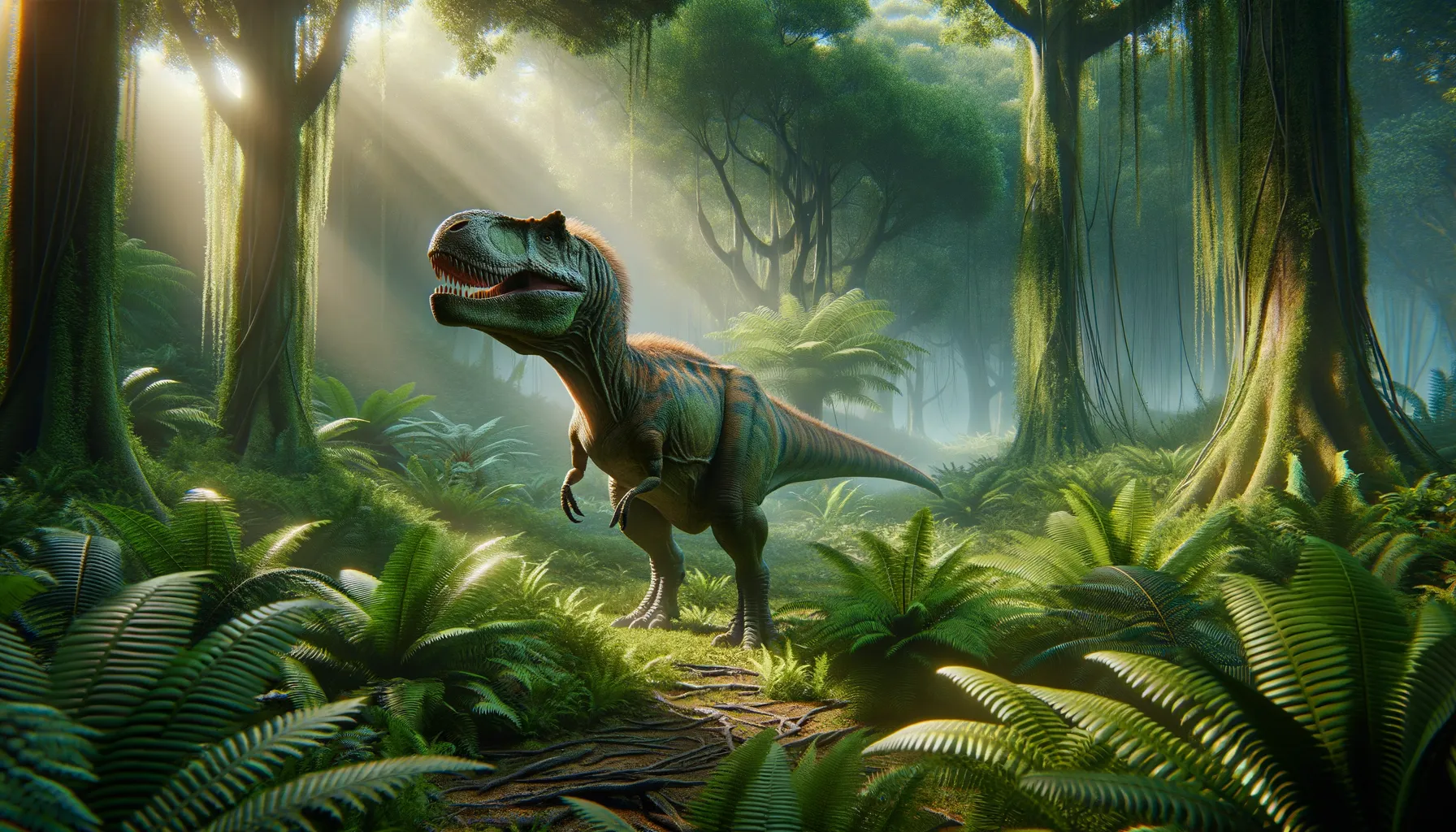
Neosaurus
A fierce predator with a cunning edge.
Period
Jurassic
Length
Neosaurus measured around 6 to 8 meters in length.
Height
It stood about 2 meters tall at the hips.
Weight
Neosaurus weighed around 500 to 700 kilograms.
Neosaurus was a medium-sized carnivorous dinosaur that roamed the earth during the Jurassic period. Known for its sharp claws and keen sense of smell, it was an adept predator of its time. Its fossil fragments have been discovered primarily in North America, helping paleontologists piece together its characteristics and the environment it lived in. Neosaurus played a significant role in its ecosystem, hunting smaller herbivorous dinosaurs.
Diet
Neosaurus primarily fed on smaller herbivorous dinosaurs and occasionally scavenged on carrion. Its diet helped maintain the balance within its ecosystem by controlling herbivore populations.
Hunting
Neosaurus hunted alone, relying on its stealth to creep up on unsuspecting prey. It used its sharp claws and teeth to quickly subdue and kill its targets, demonstrating adept predatory skills.
Environmental challenges
Neosaurus lived in a world frequently challenged by climate shifts, affecting its food sources and habitats. These environmental changes forced it to adapt by sometimes expanding its diet and territory. Natural disasters like volcanic eruptions also posed significant survival threats to Neosaurus populations, necessitating rapid migration.
Speed
Neosaurus was known for its moderate speed, allowing it to escape predators but not the fastest of its kind.
Lifespan
Neosaurus had a lifespan of approximately 20 to 30 years in the wild.
First discovery
This species was first discovered in the early 1900s in North America.
Fun Facts
- Neosaurus was a plant-eating dinosaur that lived during the Late Jurassic period.
- This dinosaur had a long neck, which helped it reach high vegetation and also scan the area for predators.
- Neosaurus is thought to have weighed around 10 tons, making it as heavy as a school bus!
- Fossils of Neosaurus have been mainly found in what is today known as North America.
- Neosaurus traveled in herds, which provided protection against predators like the fearsome Allosaurus.
- Some studies suggest that Neosaurus could live to be as old as 100 years.
- Its name, Neosaurus, means 'new lizard', although it's actually an ancient creature!
Growth and Development
Neosaurus grew rapidly during its juvenile years, reaching its full size by ten years of age. Growth rates were influenced by food availability and environmental conditions. Juvenile Neosaurus were vulnerable to predators, and their rapid development was crucial for surviving into adulthood. Strong parental involvement may have played a role in early protection.
Habitat
Neosaurus thrived in lush, forested regions that provided ample cover for hunting. These areas were rich with diverse plant life, supporting a variety of herbivorous prey species. Proximity to water sources was important for Neosaurus, influencing its movements and territorial range.
Interaction with other species
Neosaurus was a key player in the predator-prey dynamics of its ecosystem, often competing with other carnivores for food. Its interactions with herbivores were predominantly predatory, but these relationships were crucial for ecological balance. Occasionally, Neosaurus coexisted with other carnivores, forming temporary alliances to take down larger prey.
Natural lifespan
In natural conditions, Neosaurus lived for about 20 to 30 years.
Reproduction
Neosaurus likely laid clutches of eggs, which were incubated in nesting sites protected from environmental threats. Parental care might have extended to guarding eggs from predators and ensuring the young hatchlings had a chance at survival. Reproductive behavior was crucial for maintaining population numbers amidst environmental pressures.
Social behaviour
While primarily solitary hunters, Neosaurus might have exhibited some social behavior during mating seasons or in areas with abundant food. Communication was likely through visual and auditory signals, crucial for mating and asserting territorial dominance.
Fossil locations
Fossils of Neosaurus have been found predominantly in the rich Jurassic sedimentary deposits of North America. Key sites include parts of the United States, where several complete skeletons have been unearthed, offering insights into its structure and lifestyle. These locations have contributed significantly to understanding the diversity and spread of Jurassic dinosaur fauna.
